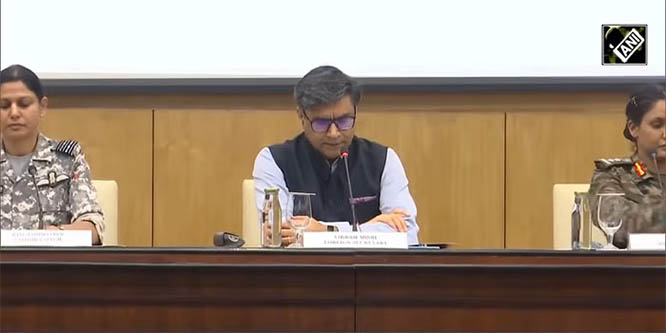
Washington, Nov 3: Irrespective of the outcome of Tuesday's keenly-contested US presidential election, America's strategic relationship with India is expected to maintain the current momentum and strengthen further, policy documents and remarks from the two campaigns indicate.
President Donald Trump, in the first term of his presidency, has emerged as the best friend of India at the White House taking the relationship to a new level and his friendship with Prime Minister Narendra Modi is well known, which was reflected in the two leaders addressing two joint rallies in the US and India in less than a year.
Highlighting the great relationship that he has developed with Modi, Trump in September said that he has "great support from India".
"Prime Minister Modi is a friend of mine and he's doing a very good job. Nothing easy, but he's done a very good job," Trump said as he recollected his historic address at the 'Howdy Mody' event in Houston last September.
Former vice president Joe Biden, the Democratic presidential candidate, has a strong track record of being an ardent advocate of a strong India-US relationship both as a Senator from Delaware for over three decades and then as deputy of President Barack Obama for eight years.
From playing a key role in the passage of India-US civil nuclear deal during a Republican administration to setting up the goal of a USD 500 billion in bilateral trade, Biden has strong ties with Indian leadership across the aisle and has a large number of Indian Americans within his close circuit.
At a fundraiser in July, Biden had said that India and the United States were natural partners.
"That partnership, a strategic partnership, is necessary and important in our security," he said when asked whether India is critical to the US' national security.
Referring to his eight years as the vice president, Biden said that he was proud to have played a role in securing Congressional approval for the US-India Civil Nuclear Agreement, which he said was a "big deal".
"Helping open the door to great progress in our relationship and strengthening our strategic partnership with India was a high priority in the Obama-Biden administration and will be a high priority if I'm elected president," Biden had said.
The ground for India-US relationship post-November 3 was laid down during the recently concluded 2+2 ministerial held in New Delhi.
Officials from the two countries, both during and after the ministerial, underscored that the ties have bipartisan support and it is not based on which party occupies the White House or has a majority in the House of Representatives and the Senate.
It is very well expected that there could be a change in nuances or emphasis on certain elements of the relationship, on who occupies the White House or have a majority in the Congress, the common national interest of the two countries in terms of democracy and threat being posed by China would drive the momentum between India and the US.
Under the Trump administration, defence and energy are being identified as two key pillars of the strategic relationship, along with the cooperation and collaboration in the health sector in the wake of the coronavirus pandemic. However, differences on issues related to bilateral trade, foreign workers visas would continue to remain.
Notably, India is the only major country with which the Trump administration failed to arrive at a trade deal, even a mini-trade deal, despite the fact the top leadership of both India and the US expressed their desire to do so. Given the track record of differences between the two countries for the last three decades, the sharp differences are likely to remain the same even during a Biden administration.
However, the bilateral trade is likely to grow at a fast pace between India and the US irrespective of who comes to power. Officials from the two countries are likely to pick up the thread from the trade negotiations that they have almost concluded this year.
India will continue to place massive orders towards the purchase of defence equipment and take the bilateral energy trade to a new level.
Under a Biden administration, climate change would emerge as another pillar of co-operation. Because of domestic political compulsions, human rights issues are expected to gain more prominence under a Biden-Harris administration, which could emerge as a bump on the road for India-US ties.
It is similar to that of H-1B issue and issues like taxation in India, under the second term of the Trump administration. But none of the issues during either a Biden or a Trump administration are likely to be a deal-breaker.
Biden this week announced to convene a global summit of democracies in the first year of his presidency to counter the 'rising authoritarianism' in the world and address issues of election security and human rights.
India, obviously, will play a key role in this summit. Similarly, under the Trump administration, India is likely to be a key partner of the US as it ramps up its global mobilisation against aggressive Chinese behaviour, especially in the strategic Indo-Pacific region.
It is expected that Prime Minister Modi would be among the first few world leaders to talk over phone and congratulate the winner as soon as it is known who would occupy the White House for the next four years.







Comments
Add new comment